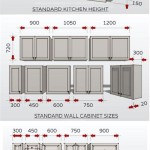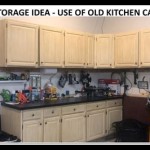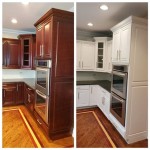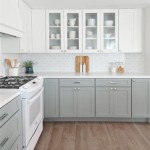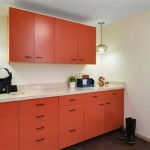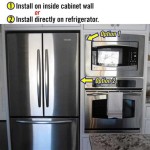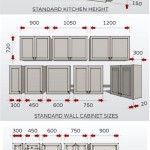```html
Kitchen Cabinet Paints: A Comprehensive Guide
Kitchen cabinets form a significant component of any kitchen's aesthetic and functionality. The paint applied to these cabinets plays a crucial role in determining their durability, appearance, and ease of maintenance. Selecting the appropriate kitchen cabinet paint requires careful consideration of various factors, including the cabinet material, desired finish, and environmental impact.
The longevity and visual appeal of painted kitchen cabinets depend heavily on choosing the correct type of paint and employing proper application techniques. This article provides a comprehensive overview of kitchen cabinet paints, exploring different types, application methods, and factors to consider for optimal results.
Understanding Different Types of Kitchen Cabinet Paints
The market offers a wide array of paints suitable for kitchen cabinets, each with distinct characteristics and benefits. Oil-based paints, latex paints, and acrylic paints represent the most common choices. Understanding the properties of each type enables informed decision-making based on project needs and priorities.
Oil-Based Paints: Oil-based paints have long been favored for their durability and smooth, enamel-like finish. These paints offer excellent adhesion, creating a hard, resistant surface. They are particularly effective in high-traffic areas, withstanding frequent cleaning and potential impacts. However, oil-based paints emit higher levels of volatile organic compounds (VOCs) compared to water-based alternatives. These VOCs contribute to air pollution and can pose health risks during and after application. Moreover, oil-based paints require mineral spirits or paint thinner for cleanup, which can be less convenient and environmentally friendly.
Latex Paints: Latex paints, also known as water-based paints, have become increasingly popular due to their low VOC content, ease of application, and simple cleanup with soap and water. Modern latex paint formulations offer improved durability and adhesion compared to older versions, making them suitable for kitchen cabinets. Latex paints dry quickly, reducing project completion time. They are also available in a wider range of colors and finishes than oil-based paints. However, some latex paints may not achieve the same level of hardness and resistance to scratches as oil-based paints. Priming the cabinets appropriately is crucial for ensuring proper adhesion and a smooth, even finish when using latex paints.
Acrylic Paints: Acrylic paints represent another category of water-based paints known for their excellent adhesion, durability, and resistance to cracking and peeling. They offer superior color retention compared to latex paints, maintaining their vibrancy over time. Acrylic paints are also highly resistant to moisture, making them a good choice for kitchens where humidity levels can fluctuate. They are generally more expensive than latex paints but offer enhanced performance characteristics that justify the higher cost for some applications. Similar to latex paints, proper priming is essential for optimal results.
Specialty Cabinet Paints: In addition to the three main categories, specialty cabinet paints are available that are specifically formulated for use on kitchen cabinets. These paints often incorporate advanced technologies, such as self-leveling properties, enhanced stain resistance, and improved adhesion to difficult surfaces. They may also be designed for specific application methods, such as spraying, which can produce a professional-looking finish. Specialty cabinet paints often come with a higher price tag, but they can provide superior results and enhanced durability in demanding kitchen environments.
Key Factors to Consider When Choosing Kitchen Cabinet Paint
Selecting the optimal kitchen cabinet paint involves a careful evaluation of several key factors. These include the cabinet material, desired finish, durability requirements, VOC content, and application method. Addressing these factors ensures a successful and long-lasting paint job.
Cabinet Material: The type of material your cabinets are made of significantly influences paint selection. Wood cabinets, whether solid wood or wood veneer, typically require specific primers and paints to ensure proper adhesion and prevent tannin bleed-through (a discoloration that occurs when tannins from the wood leach into the paint). Laminate cabinets, on the other hand, often require specialized bonding primers designed to adhere to slick, non-porous surfaces. Metal cabinets may require rust-inhibiting primers and paints formulated for metal surfaces. Failing to consider the cabinet material can lead to paint failure, peeling, and other problems.
Desired Finish: The desired finish, whether matte, satin, semi-gloss, or high-gloss, impacts both the appearance and performance of the painted cabinets. Matte finishes offer a subtle, non-reflective look that can hide imperfections well. However, they are typically less durable and more difficult to clean than glossier finishes. Satin finishes provide a slightly reflective sheen and offer a good balance of durability and cleanability. Semi-gloss finishes are more reflective and resistant to moisture and stains, making them a popular choice for kitchens. High-gloss finishes offer the highest level of reflectivity and durability, but they can also highlight imperfections in the cabinet surface. The choice of finish depends on the desired aesthetic and the level of maintenance you are willing to undertake.
Durability Requirements: Kitchen cabinets are subject to frequent use, exposure to moisture, and potential impacts. Therefore, durability is a crucial consideration when selecting paint. Choose paints that are specifically formulated to withstand these conditions. Look for paints that are resistant to chipping, scratching, and staining. Consider paints that offer good moisture resistance to prevent damage from spills and humidity. For high-traffic areas, consider using a durable topcoat or clear coat to provide extra protection.
VOC Content: Volatile organic compounds (VOCs) are chemicals that evaporate from paint and contribute to air pollution. They can also pose health risks, especially to individuals with respiratory sensitivities. When selecting kitchen cabinet paint, opt for low-VOC or zero-VOC options whenever possible. These paints minimize environmental impact and reduce the risk of health problems. While low-VOC paints may sometimes be slightly more expensive, the benefits they offer in terms of air quality and health outweigh the cost.
Application Method: The application method, whether brushing, rolling, or spraying, can also influence paint selection. Brushing is a traditional method that is suitable for small projects and intricate details. Rolling is a faster method for covering large surfaces, but it may leave a slight texture. Spraying provides the smoothest, most even finish, but it requires specialized equipment and careful preparation. Some paints are specifically formulated for spraying, while others are better suited for brushing or rolling. Consider the application method you plan to use and choose a paint that is compatible with that method.
Essential Steps for Painting Kitchen Cabinets
Achieving a professional-looking paint job on kitchen cabinets requires careful preparation and adherence to a series of essential steps. These steps include removing hardware, cleaning the cabinets, sanding the surfaces, applying primer, painting the cabinets, and reassembling the hardware. Skipping or inadequately performing any of these steps can compromise the final result.
Removing Hardware: The first step is to remove all hardware from the cabinets, including knobs, pulls, hinges, and latches. This allows for easier painting and prevents paint from getting on the hardware. Store the hardware in a safe place to avoid losing any pieces. Label each piece of hardware to ensure proper reassembly. You can also use painter's tape to mark the location of each piece of hardware on the cabinets to make reassembly easier.
Cleaning the Cabinets: Thoroughly clean the cabinets to remove any grease, dirt, or grime. Use a degreasing cleaner or a mixture of soap and water to scrub the surfaces. Rinse the cabinets with clean water and allow them to dry completely. Cleaning the cabinets ensures that the primer and paint will adhere properly to the surface. Pay particular attention to areas around the stove and sink, where grease and grime tend to accumulate.
Sanding the Surfaces: Sanding the cabinet surfaces creates a slightly rough texture that helps the primer and paint adhere better. Use a medium-grit sandpaper (120-180 grit) to lightly sand the cabinets. Be careful not to sand too aggressively, as this can damage the wood. After sanding, wipe the cabinets with a tack cloth to remove any dust. Sanding is especially important for cabinets with a glossy or smooth finish, as it provides a better grip for the primer and paint.
Applying Primer: Applying a primer is essential for ensuring proper adhesion and preventing tannin bleed-through. Choose a primer that is specifically designed for use on kitchen cabinets. Apply a thin, even coat of primer to the cabinets using a brush, roller, or sprayer. Allow the primer to dry completely according to the manufacturer's instructions. Priming helps to create a uniform surface for the paint and prevents the underlying material from affecting the color or finish of the paint.
Painting the Cabinets: Once the primer is dry, you can begin painting the cabinets. Apply a thin, even coat of paint using a brush, roller, or sprayer. Allow the paint to dry completely according to the manufacturer's instructions. Apply a second coat of paint for better coverage and durability. Again, allow the paint to dry completely before handling the cabinets. Applying multiple thin coats is preferable to applying one thick coat, as it reduces the risk of drips and runs.
Reassembling the Hardware: After the paint is completely dry, you can reassemble the hardware. Use the labels or markings you made earlier to ensure that each piece of hardware is placed in the correct location. Tighten the screws securely, but be careful not to overtighten them, as this can damage the cabinets. Reassembling the hardware is the final step in the painting process, and it completes the transformation of your kitchen cabinets.
By carefully considering the factors outlined above and following the essential steps for painting kitchen cabinets, homeowners can achieve professional-looking results that enhance the beauty and functionality of their kitchens.
```
7 Expert Tips For Flawless Kitchen Cabinet Painting

Behr Premium 1 Gal Ppu24 10 Downtown Gray Semi Gloss Enamel Interior Exterior Cabinet Door Trim Paint 712001 The Home Depot

Durable Kitchen Cabinet Painting 10 Year Warranty Columbus Oh

How To Paint Kitchen Cabinets Like The Pros

How To Paint Kitchen Cabinets Best Color Ideas Cost

How To Paint Kitchen Cabinets Like The Pros

Cabinet Refinishing Guide

Pro Tips For Painting Cabinets In Your Home Paintzen

Behr Premium 1 Gal S170 7 Dark Cherry Mocha Semi Gloss Enamel Interior Exterior Cabinet Door Trim Paint 712301 The Home Depot

The Best Kitchen Cabinet Paint Brand Honest Review
Related Posts

